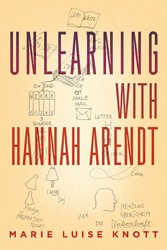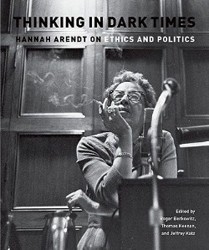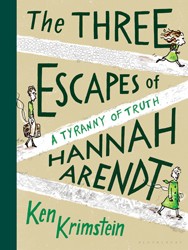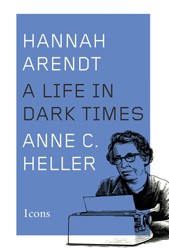By
– May 14, 2013
Taking Hannah Arendt’s controversial account of the Adolf Eichmann trial in Israel and her report on the “banality of evil” as its point of departure, Visualizing Atrocity challenges the myths that Hartouni believes have shaped and limited our understanding of the Nazi genocide and totalitarianism’s broader and recurrent features. These myths are tied closely to the atrocity imagery that surfaced with the liberation of the camps and played an important role in the evidence produced for the postwar trials of the perpetrators.
At the 1945 Nuremberg trials certain techniques of “looking” at genocide were established and these were later reinforced during the 1961 Eichmann trial in Israel. These are marker events for Hartouni for they constituted the parameters for how we view and understand genocide and that drives contemporary mythmaking about what should be included as genocidal events as such. Her particular project in this book is to deconstruct what she sees as the discourse of uniqueness that has surrounded Holocaust scholarship and reflections, a discourse of radical rupture that sees the Shoah as a singular phenomenon outside of historical experience and that is central to how the Holocaust has been expressed in popular culture and consciousness. This approach, or myth making as she understands it, has been written into the historical record, its perpetuation a matter of “sacred obligation” and/or national identity with the stakes being very high. Arendt’s concept of the “banality of evil,” of the thoughtlessness and moral obtuseness of the perpetrators rather than the notion of their radical evil, worked to disrupt the consensus developing around Holocaust discourse. This is especially important now because it draws our attention to the social and cultural forces that are still operative in society including instrumental thinking, the objectification of “the other” and techniques of control and regulation that expand the realm of fear so critical for maintaining a compliant population. It may also allow us to better appreciate genocide’s contemporary conditions of possibility.
This is an ambitious contribution of intellectual history that attempts to reclaim the work of Arendt thereby moving away from a Holocaust-centered approach to genocide studies, opening up new vistas of genocide recognition and reflection of a world organized now and then by practices and processes that are life-denying and threatening. What it lacks in historical grounding and context it certainly makes up in originality and openness to the power of visual culture effecting moral and political judgment.
Michael N. Dobkowski is a professor of religious studies at Hobart and William Smith Colleges. He is co-editor of Genocide and the Modern Age and On the Edge of Scarcity (Syracuse University Press); author of The Tarnished Dream: The Basis of American Anti-Semitism; and co-author of The Nuclear Predicament.





